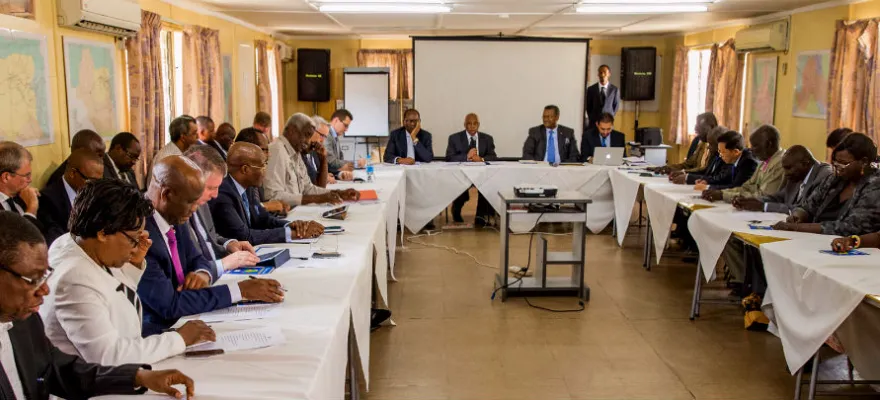Space launches are becoming more and more common as more commercial companies enter the space industrial complex. Astrobiotics, on January 8, 2024, attempted a significant step forward by becoming the first private enterprise to attempt a lander mission to the Moon called Peregrine. The spacecraft carried a number of payloads including small rovers, NASA experiments, time capsules, and the cremated remains of dozens of humans and one dog. That latter payload was paid for by the companies Elysium Space and Celestis who act as “Space Burial Companies”. The company Celestis has been selling access to “Space burials” for more than a decade.
Continue readingCategory Archives: Human Rights

The Suitability of Restorative and Retributive Mechanisms to Achieving Transitional Justice for Victims of Conflict-Related Sexual Violence in South Sudan
Introduction
Years of conflict in South Sudan have resulted in widespread acts of conflict-related sexual violence (CRSV) in the nation, especially against women and young girls. The devastating effects of this issue are usually physical harm, psychological issues, and in many cases death of the victims. Despite the peace agreement signed by the political leaders and efforts taken to stop the conflict and the crimes, CRSV is still one of the most prevalent issues in the country. The South Sudanese government and opposition leaders signed the Agreement on the Resolution of Conflict in South Sudan (ARCSS) in an attempt to stop the fighting. However, conflict resumed in 2016, rendering the agreement temporary. The Revitalized Agreement on the Resolution of Conflict in South Sudan (R-ARCSS), signed in 2018, included three important components related to transitional justice and peace. The first element is the establishment of a Truth, Reconciliation, and Healing Commission, which is critical for promoting peace. The second component is the creation of an independent hybrid court to hold accountable those who violated national and international laws. The third element is the Compensation and Reparation Authority, which will provide financial and material assistance to those who suffered losses in the conflict.[1] Although this agreement is viewed as a significant move towards peace in the country, it has yet to fully execute its mandates due to the prevalence of conflict-related sexual violence.
Continue reading
Sudden Leap into Darkness: The case of Maasai Exclusion and marginalisation in Ngorongoro, Northern Tanzania
Joseph Moses Oleshangay[1]
Ngorongoro, a World Heritage Site, Man and Biosphere Reserve, Global Geopark by UNESCO, and home for over 80,000 Maasai is under siege. The Maasai, a Nilotic ethnic group, have moved around the Ngorongoro and Serengeti areas while conserving the land and wildlife for approximately 500 years. Over the centuries the Maasai have developed a finely honed symbiotic relationship with the local environment, which has allowed the domestication of livestock and people to coexist in a dryland and therefore a resource-scarce environment. In addition, their local knowledge has allowed the large mammal population as well as ecological diversity to grow under their stewardship. However currently they are being accused by the government, international conservation lobbyists, and wildlife hunting firms, of threatening what they have kept safely over centuries. As history demonstrates, nothing could be further from the truth. As this article will demonstrate, the ongoing pressure against the Maasai is largely influenced by the potential financial gain resting with the land, wildlife, and ecological biodiversity, rather than their own role in threatening nature and wildlife.
Continue reading
The Aftermath of The Ecuadorian Earthquake
Andy Taylor
Six years after the 7.8 Earthquake on the 16th of April 2016, the human rights of those who survived remain conspicuously ignored. According to World Vision the Earthquake killed nearly 700 people and severely injured more than 6,000. Out of the 7 million people in the worst-affected provinces, 700,000 needed immediate assistance.
Continue readingEmploying Enforced Disappearance as a Framework; a Game Changer in Seeking Justice for Iran’s 1980s Atrocities
Shadi Sadr*
“It’s been over thirty years, but my mum won’t let us change the key to our home. She keeps saying if my brother comes back and we are away, he must be able to use his key and not to linger outside.” The sister of a victim of disappearance during the decade-long political cleansing by the newly established Islamic regime after the 1979 revolution in Iran once told me this.
Continue reading